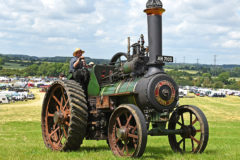Muir-Hill Series II anniversary
Posted by Chris Graham on 7th April 2022
We celebrate the 50th anniversary of the Muir-Hill Series II tractor, with its high-clearance design, equal-size wheels and four-wheel-drive.

The Muir-Hill Series II tractors were launched in 1972 and looked radically different to the original yellow tractors, with their tall, white-painted cabs that were ahead of the game at the time for driver comfort.
In 1966, Muir-Hill, a firm based in Gloucestershire and best known for its construction and industrial machinery, produced its first agricultural tractor: the 101. This six-cylinder tractor, based on the Ford 5000 skid unit, was powered by a 108hp Ford 2704E engine and was designed by the same engineer that had been the brainchild behind the earlier Northrop 5004 tractor, hence the 101 having much in common with the earlier machine.
Unlike the Northrop, however, the 101 was an instant success, its rugged design and simplicity proving ideal for the rigours of tough farm work, as well as industrial applications. It was joined in 1969 by the very similar 110, the only ™ꪪ difference being the fact that it was powered by a Perkins six-cylinder engine.

The heart of the 111 is a Perkins 6.354 six-cylinder engine of 5.8 litres, producing 110hp. It is concealed by some serious steel chassis rails and, of course, the square bonnet.
That same year a much bigger version appeared too, the huge 161. This behemoth was a 163hp tractor that was also powered by a Perkins engine, this time a mighty V8. Then, in 1971, the 101 gained considerably more power when its engine was swapped in favour of a Ford 2715E unit of 120 horsepower. This version would be short-lived, however, as the new Series II Muir-Hill tractors were destined to appear the following year.
The Series II
The Series II tractors built on the strengths of the original models, keeping the same high-clearance central drive line, equal-size wheel, four-wheel drive system and angular tinwork that was cheaper than using the Ford bonnets – as competitors County Commercial Cars and Roadless Traction did. The Ford gearbox was also retained, although it took a few years before the Dual Power option became available on the Series II range, doubling the number of forward gears available from eight to 16.
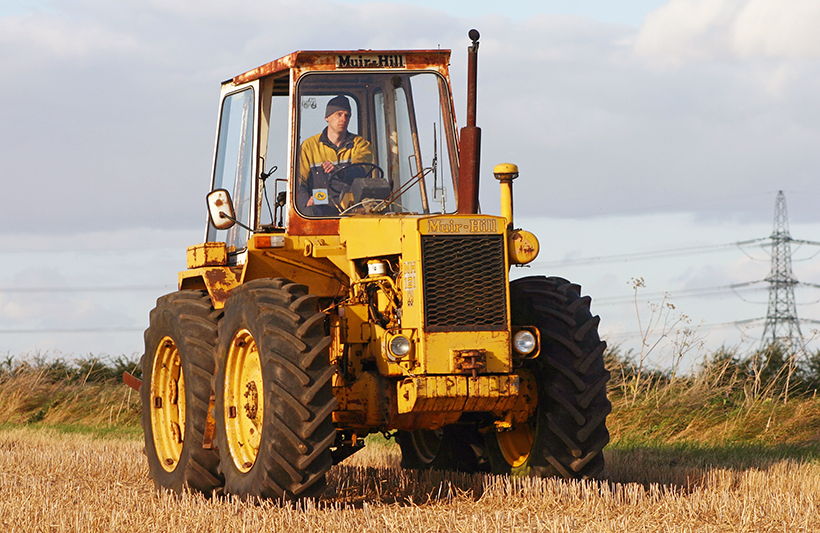
The 121 shared the same styling and cab as the 111, the difference being the use of the Ford six-cylinder engine instead of the Perkins unit.
New, though, was a proper cab as a factory-fitted unit. This tall cab was a huge improvement over the old safety cab on the first Muir-Hill tractor, which had been very crude and simple to say the least. The flat floor cab not only had a sliding door on each side, giving excellent and easy access once you had climbed the steep steps to the high perch, but was also mounted on rubber to give a much quieter ride for the operator, reducing noise and vibration from the skid unit.
The cab was the main improvement of Series II and it had been given a great deal of consideration in development, with the end result being a cab well in advance of its time and even ready to meet the maximum sound level legislation that would come into effect in 1976 – four years later.

A close-up of those comically-thin steps that allow access to the narrow ‘footplate’ outside of the sliding cab door. The high ground clearance of the 111 is demonstrated by the propellor shaft positioned underneath the engine, connecting the drop box to the front axle.
As part of the Series II range, the 101 was replaced by the 121 model, using the same Ford 2715E six-cylinder engine that its predecessor had used from 1971, rated at 120hp. The 111 replaced the 110 and continued to offer a Perkins-powered alternative to the Ford engine in the 121. Using a 110hp Perkins 6.354 engine, this was now actually the smallest offering in the new line-up.
These tractors were based on the Ford Force 5000 model, but you had to look closely to see evidence of its donor machine, as Muir-Hill replaced every cosmetic aspect of the 5000 in favour of its own components.
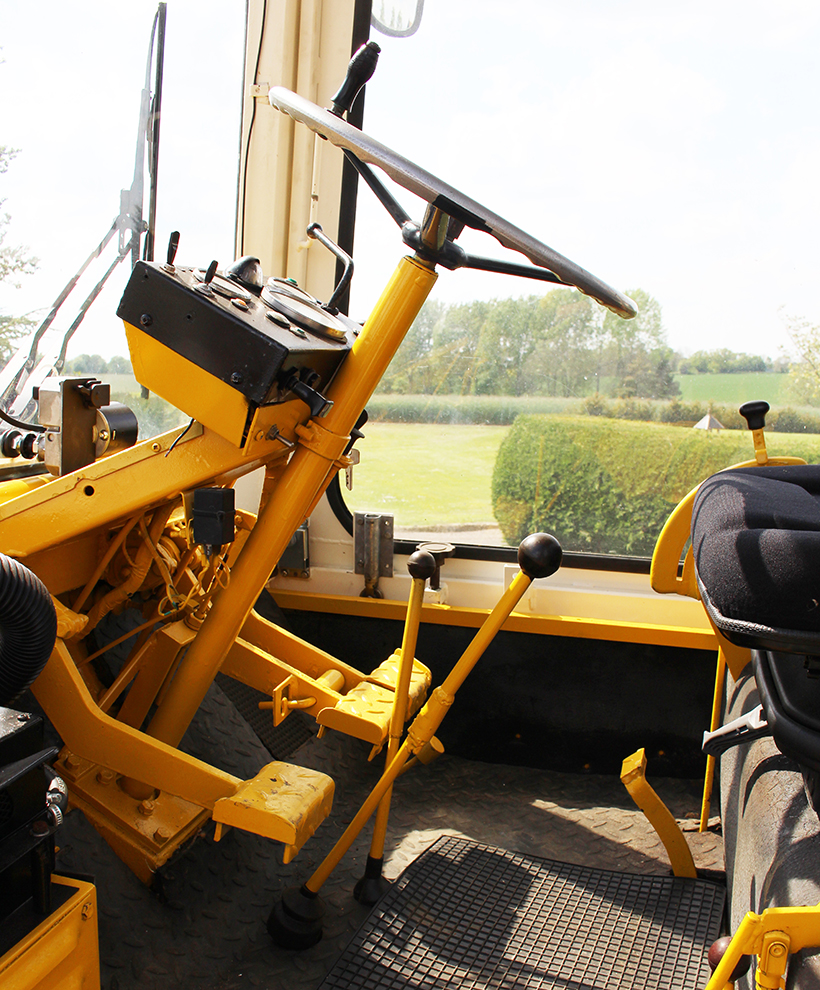
The cab looks sparse to modern eyes, but with its flat floor, tall build and excellent visibility, this was luxury back in 1972! The two centrally-mounted gear levers control the Ford transmission.
Perhaps surprisingly, the original flagship 161 model carried on in production next to the two Series II models, right up to 1975. This was perhaps because this leviathan of a machine had, from its inception in 1969, been available with a substantial factory-fitted cab – not as well-appointed as those fitted to the new Series II 111 and 121, but adequate to remain in production until a new replacement model was ready to take on the flagship role.
The last and largest
That finally happened in 1975 when the 171 replaced the 161, the new tractor featuring the Series II cab and being even more powerful than its predecessor, thanks to its Perkins V8.540 engine producing nothing short of 170hp. To cope with this power, the Ford transmission was replaced by a sturdier Fuller gearbox on the yellow flagship, providing 10 forward speeds and two in reverse. Unlike the impressive 161, which had boasted twin exhaust stacks, the 171 had to manage with just one bonnet-mounted stack. This did inevitably lead to the 171 not sounding quite as distinctive as the 161, although an eight-cylinder engine obviously still produced some serious music, and overall, the 171 was a very impressive tractor, with a larger stature than its Series II stablemates.
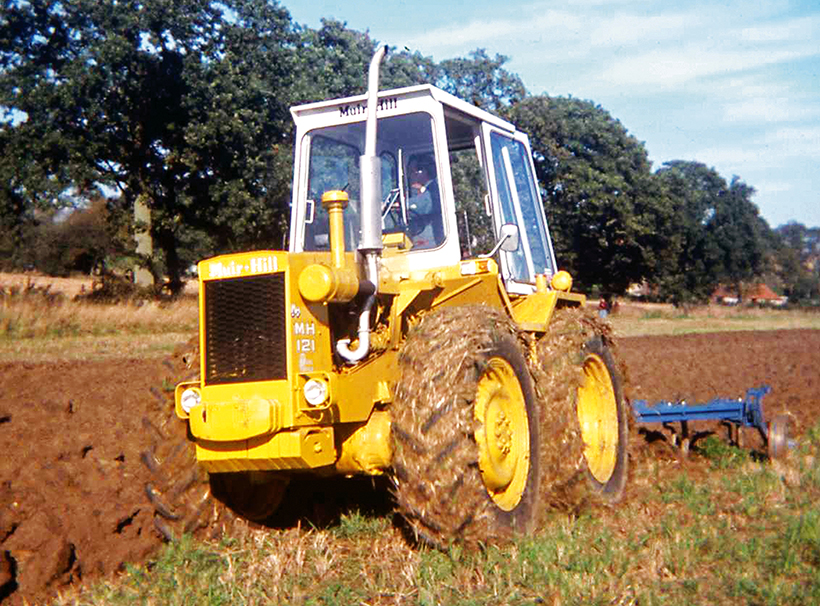
This Muir-Hill 121 was captured on demonstration when brand-new in 1977 and, like other late examples, is fitted with the Ford Dual Power transmission – giving 16 forward and four reverse gears. A full set of front weights is supplemented by others bolted onto the front. (Pic: Kim Parks)
In fact, the 171 was one of the largest tractors available in Britain in the mid-1970s and would remain, albeit in uprated Series III form, the most powerful tractor to be built in the UK until County unveiled its 1884TW model in 1980.
All-round performers
Although the Ford Dual Power transmission option was not actually offered on the 111 and 121 until quite late in the production life of the Series II tractors, it soon became a popular choice as it gave a wider range of gear ratios – with high and low gears in each of the main ratios being available at the touch of a switch.
All three Muir-Hill Series II tractors from 110 to 170hp filled an important niche in industrial applications, as well as in agriculture. Alternative transmission options and other features were also listed for industrial use that ™ were not included on the agricultural-spec machines.

A rear view of the 111 shows how the cab actually overhangs slightly above the linkage, giving good visibility straight down. The Ford origins are clear to see.
These three tractors were very popular and, although not as successful sales wise as the County and Roadless products of the same power range, the yellow Muir-Hill machines did have some advantages over the competition. Perhaps the most important of these was the ability to turn much tighter than the County big wheelers, despite still being of an equal-size wheel, four-wheel drive configuration.
This was made possible by the tractors’ higher ground clearance and the front axle design with a centrally-mounted prop shaft drive. This ability to turn tightly had many benefits, particularly when working on smaller field where it was not possible, or desirable to have large headlands.
The Muir-Hill’s high ground clearance, plus excellent manoeuvrability, meant that these tractors were also ideal for such specialist tasks as hauling trailed pea viners, that required the tractor to straddle the pre-cut swath of peas as the trailed viner picked them up behind.
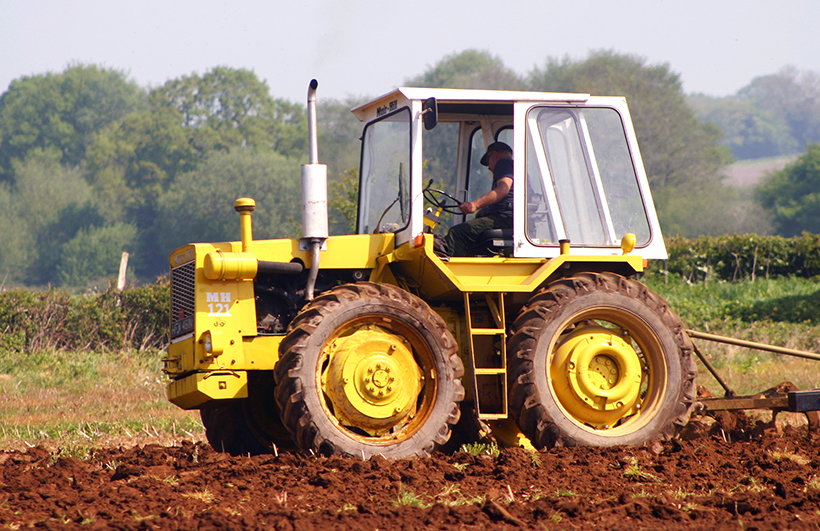
While ploughing in warm weather, the cab doors can be kept slid back out of the way to allow a superb circulation of air within.
The added comfort afforded by the new cabs of the Series II 111 and 121 also provided a much better workspace for the sort of jobs that involved 12-hour working shifts at the wheel.
The legacy
The Series II tractors were eventually replaced entirely in 1978, when the new Series III range arrived with an even better cab and a wider selection of models on the price lists. The Series II range had proved a great success for the company and had taken the Muir-Hill agricultural tractor from its first generation and honed it into a tractor more fit for the 1970s.

The original 161 model reigned supreme as the top Muir-Hill tractor right up to 1975 when the third and final Series II tractor arrived in the impressive shape of the 171, seen here powering up a stubble field. (Pic: Stephen Richmond)
Although not as coveted today as the County machines, anybody that used to work these Series II Muir-Hill tractors regularly will soon tell you that they were far superior to the competition and probably the best four-wheel drive tractors of their time! Every tractor marque has a following, but it seems that those that used the Muir-Hill in anger back in the 1970s and ’80s, will more often than not retain a fondness for the yellow giants long afterwards.
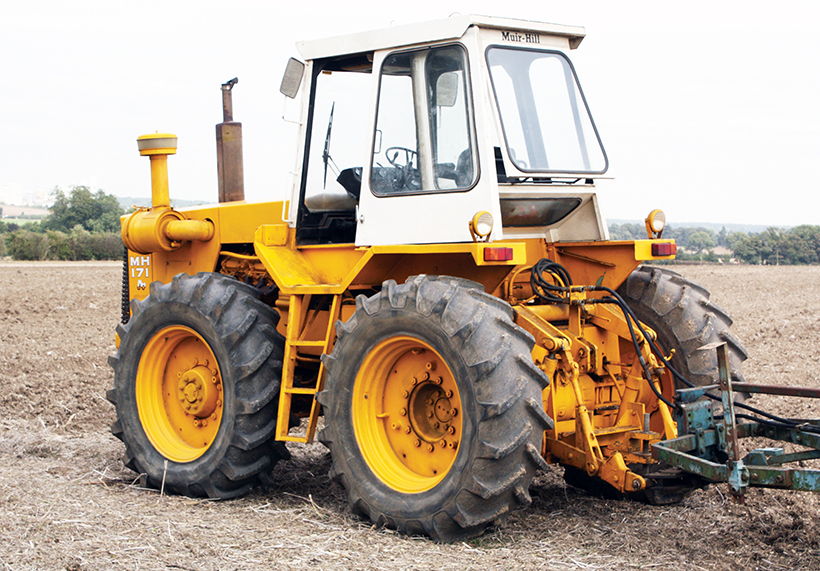
The 171 was a huge tractor in the mid-1970s and was the largest built in the UK at the time. The rear linkage was large enough to tackle the biggest implements of the period, while the Series II cab was perched higher up than on the smaller tractors in the range, making this tractor look even more imposing.
And, although their numbers are always less than other makes, whenever a working day is graced by the presence of one, they certainly seem to garner plenty of attention. Those big, yellow, angular, four-wheeled monsters built in Gloucester were certainly something special and we shall never quite see their like again.
This article is from the latest issue of Tractor & Machinery magazine, and you can get a money-saving subscription simply by clicking HERE



